Retro gaming has surged recently. It’s offering simplicity and nostalgia. Modern gaming continues to evolve rapidly. Classic games provide refreshing escapism. They return us to gaming’s roots. This revival is a big phenomenon. Old consoles and emulators thrive.
Classic games are now accessible. Players want to preserve history. They celebrate gaming’s rich past. Communities unite fans worldwide. They share memories and classics. Retro gaming bridges generations effortlessly. It enriches today’s gaming landscape. Embracing it connects us deeply.
The Appeal of Retro Gaming
Retro gaming appeals to everyone. Newcomers love these timeless classics. Many missed gaming’s early eras. They’re eager for first experiences. Classic games captivate through nostalgia. Popularity boosts their continued relevance. Positive reviews enhance their allure.
Gameplay mechanics remain engagingly simple. Aesthetics charm with retro visuals. Storytelling was unique and memorable. Enduring appeal stems from these factors. Retro games bridge past and present. They enrich the modern gaming scene.
Nostalgia Factor
Nostalgia fuels retro gaming’s rise. Adults recall gaming’s golden age. Arcades, consoles, and PCs thrived. Revisiting classics brings fond memories. Familiar sights bring childhood joy. Sounds evoke simpler, past times. Gameplay mechanics remain comfortingly simple.
Players escape modern life’s complexities. Retro games offer nostalgic comfort. They connect us to history. This escape is deeply personal. Many cherish these timeless experiences. Nostalgia drives retro gaming’s appeal.
READ THIS BLOG: FintechZoom Rolex Submariner: Ultimate Guide & Time is Money
Simplicity and Accessibility
Retro games prioritize simplicity and accessibility. Straightforward gameplay defines these classics. Intuitive controls are easy to grasp. Players of all levels can enjoy. Modern games need extensive tutorials. Complex buttons can overwhelm newcomers.
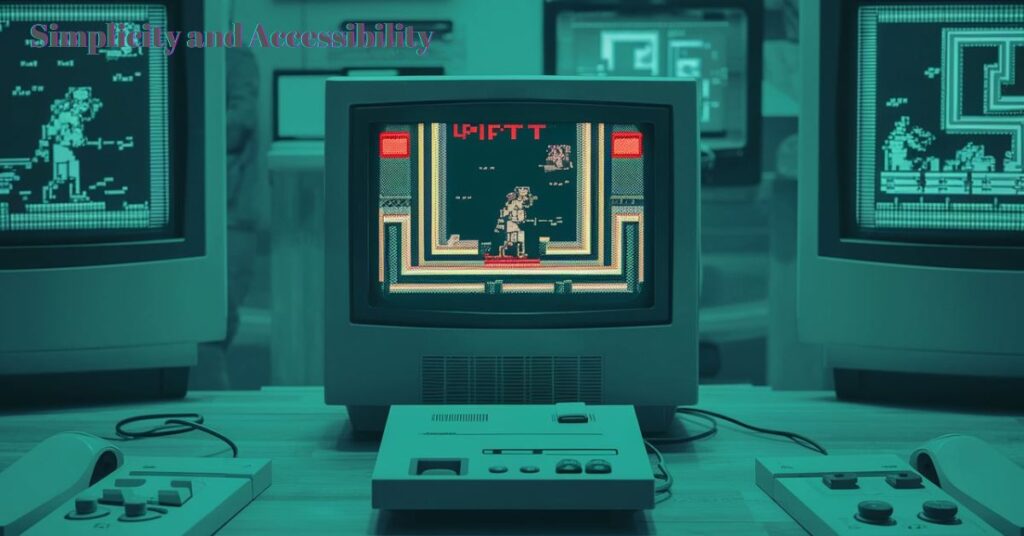
Retro titles offer instant engagement. No need for lengthy instructions. Core experiences remain the focus. Simple systems avoid confusion. Convoluted storylines aren’t necessary. Players appreciate this clarity. Retro games excel in simplicity.
Unique Artistic Style
Early gaming hardware had limitations. Developers had to be creative. Visual designs were distinct and unique. Pixel art styles became iconic. Charming graphics are low-resolution. They possess a timeless quality.
Players are captivated by them. Decades later, they’re still admired. Pixel art resurges in indie games. Its aesthetic endures through time. This appeal remains strong today. Modern gamers love pixel art. Retro visuals continue to inspire.
Challenge and Skill-Based Gameplay
Retro games require precision and timing. Quick reflexes are essential for success. Complex levels need memorization and skill. They lack modern autosave or checkpoints. Learning from failures is crucial.
Pattern recognition is highly encouraged. Limited lives create a sense of urgency. High scores motivate repeated play. Mastery leads to satisfaction and pride. Steep learning curves offer great rewards.
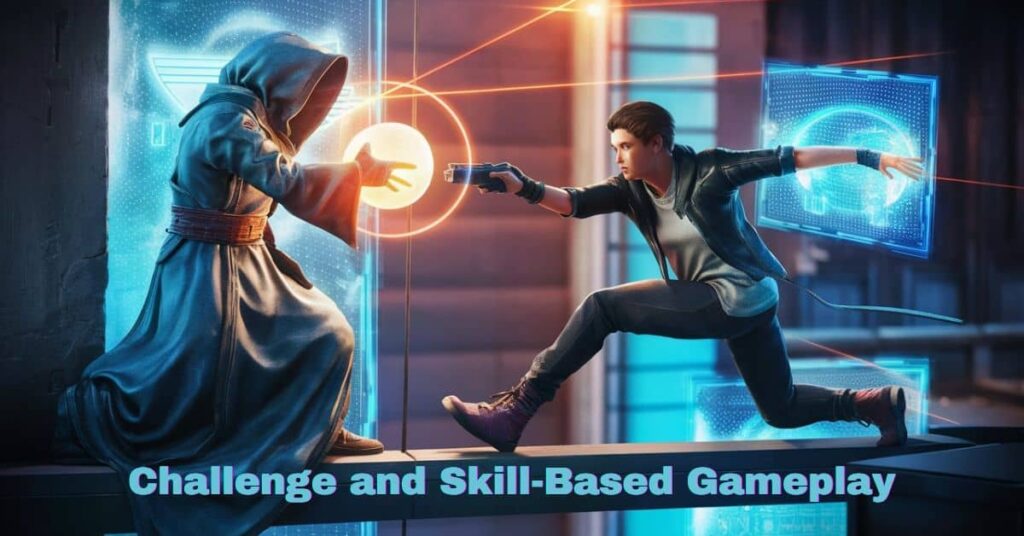
Competitive scenes and speedrunning thrive. Players enjoy overcoming tough challenges. Practice and persistence are necessary. Retro games test and improve abilities. Rewards come from skill and dedication.
- Precision and Timing: Essential for navigating complex levels.
- Memorization: Key to mastering level designs.
- Limited Lives: Adds urgency and pressure.
- Pattern Recognition: Vital for overcoming obstacles.
- High Scores: Motivate repeated attempts and improvement.
The Evolution of Retro Gaming
Retro gaming began as a niche. Nostalgic gamers revived old consoles. Rare cartridges were hunted at markets. Online forums connected retro enthusiasts. Communities formed around shared interests.
Retro gaming is now mainstream. Classic console mini versions are popular. Digital stores offer old game downloads. Indie games use retro-style graphics. Big developers revisit beloved old titles.
Retro gaming’s appeal is growing. Nostalgia drives interest in classics. Modern accessibility enhances retro experiences. New generations discover retro game charm. The past influences the gaming future.
From Obsolescence to Collectibles
Older systems were once discarded. Advanced games made them obsolete. Forgotten titles gained nostalgic value. Over time, interest resurged strongly. Retro items became collectibles. Collectors seek rare and valuable games. Limited edition consoles are prized.
Original packaging adds to worth. Retro gaming is a valuable hobby. Enthusiasts invest in vintage items. High prices attract serious collectors. Retro gaming holds financial value. Nostalgia fuels demand for classics. Collecting combines passion and profit. Retro items are now prized.
READ THIS BLOG: Game & Server Customizing ARK: Survival Evolved Engine Settings Game Icons
Emulation and Digital Distribution
Emulation technology simplifies accessing classics. Modern devices can run old software. Emulators preserve games for future generations. Players experience nostalgia on new hardware. Retro gaming is more accessible.
Digital platforms offer retro releases. Official releases ensure legal access. Classic titles are easily purchased. Contemporary systems host old favorites. Retro games thrive in the digital age.

Preservation is key for emulators. Legal purchases support game creators. Modern convenience meets nostalgic gaming. Players enjoy classics without old hardware. Retro games live on digitally.
Retro-Inspired Modern Games
Retro gaming inspires modern developers. Classic games shape new experiences. Nostalgic elements meet contemporary design. Old and newly create unique fusion. Indie game scene thrives on this.
Indie developers honor classic inspirations. They push technological boundaries creatively. Nostalgia blends with innovation effectively. Retro elements enhance modern gameplay. New games respect old traditions.
Retro influences drive creative evolution. Classic games inspire modern creativity. Indie games merge past and present. Nostalgic homages meet cutting-edge design. Retro gaming’s legacy continues innovatively.
Preserving Gaming History
Gaming history is culturally significant. Old games showcase early innovations. Preserving history maintains gaming legacy. Classic titles highlight industry’s evolution. Historical preservation aids future study.
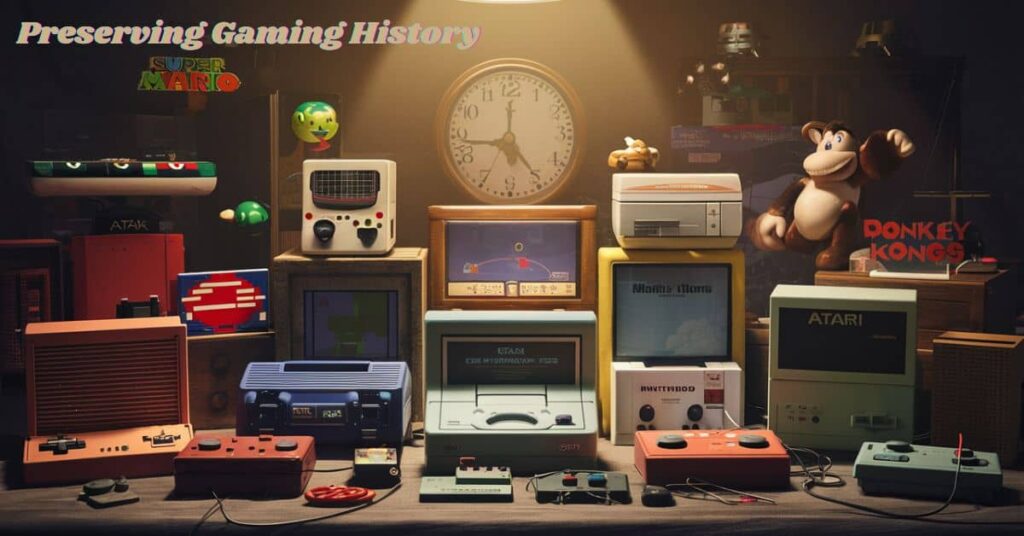
Emulators help preserve gaming history. Digital archives store vintage software. Museums display historical gaming artifacts. Collectors keep rare games alive. Archival efforts protect gaming heritage.
Educational value in preserving games. Researchers study past gaming trends. Gamers appreciate historical context deeply. Preserved games teach industry lessons. History informs future game development.
The Importance of Game Preservation
Industry evolution highlights preservation need. Awareness of gaming history is growing. Enthusiasts recognize importance of archiving. Classic games are valuable cultural artifacts. Preservation ensures future accessibility.
Retro gaming enthusiasts drive archiving efforts. Organizations restore games and hardware. Historical materials are carefully maintained. Future generations benefit from preservation. Gaming history is a shared legacy.
Archiving protects gaming’s cultural impact. Restoration keeps history alive and relevant. Classic games offer educational insights. Preserved artifacts enrich gaming studies. Preservation efforts honor gaming’s past.
Museums and Exhibitions
Gaming museums are increasingly popular. Exhibitions showcase gaming technology evolution. Classic titles’ cultural impact is highlighted. Public education on retro games grows. Media history includes gaming significance.
Institutions play a crucial role. They educate the public effectively. Retro games are historical artifacts. Exhibitions preserve gaming heritage. Museums connect past and present.

Gaming’s evolution is on display. Public learns about gaming history. Cultural impact of classics is shown. Broader media context includes games. Education on gaming history expands.
Key Points:
- Public Education: Museums teach gaming’s historical significance.
- Technology Evolution: Exhibitions show technological advancements.
- Cultural Impact: Classic games’ influence is highlighted.
- Preservation Efforts: Institutions maintain gaming heritage.
Documentation and Oral Histories
The gaming industry has evolved significantly. Early developers faced many challenges. Their stories are being documented now. Oral histories capture their experiences. Interviews provide personal insights and details.
Classic games’ creation is fascinating. Pioneers’ experiences are valuable to record. Projects help preserve this knowledge. Future generations will benefit greatly. Understanding the past aids innovation.
In-depth interviews reveal development struggles. Stories of industry pioneers are unique. Documentation efforts ensure they aren’t lost. These projects are essential for history. Gaming’s heritage deserves preservation and study.
Modern Resurgence of Retro Gaming
Retro gaming is making a huge comeback. Classic consoles are being re-released now. Old games are available everywhere. Retro-style pixel graphics are popular. Streaming retro games attracts large audiences.
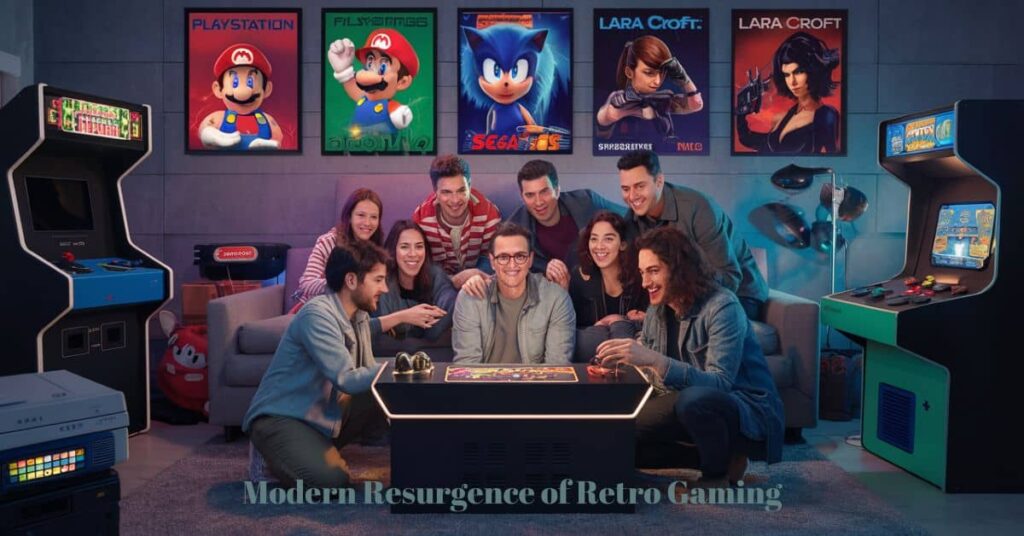
Retro gaming events draw big crowds. Tournaments feature classic game competitions. Collectors pay high prices for rarities. Rare old games are highly sought. Classic game appreciation is stronger than ever.
Retro gaming continues to thrive today. Nostalgia drives the demand for classics. Old and new platforms feature games. Retro game communities are very active. The passion for vintage games endures.
The Educational Value of Retro Gaming
Retro gaming offers significant educational value. Classic games teach problem-solving skills. They encourage strategic thinking and planning. Retro games often require resource management. Learning through play enhances cognitive development.
History of gaming is explored through classics. Retro games provide cultural insights and context. Analyzing old games reveals design evolution. Players learn about technological progress over time. Retro games offer lessons in innovation.
Educational value includes developing patience and perseverance. Retro gaming often requires trial and error. Players gain skills in critical thinking. Engaging with old games builds focus. Retro gaming enriches learning through fun.
Learning Through Play
Retro games have educational benefits. Simple mechanics enhance problem-solving abilities. Repetitive gameplay builds hand-eye coordination. Games like “The Oregon Trail” teach history. They also cover resource management skills.
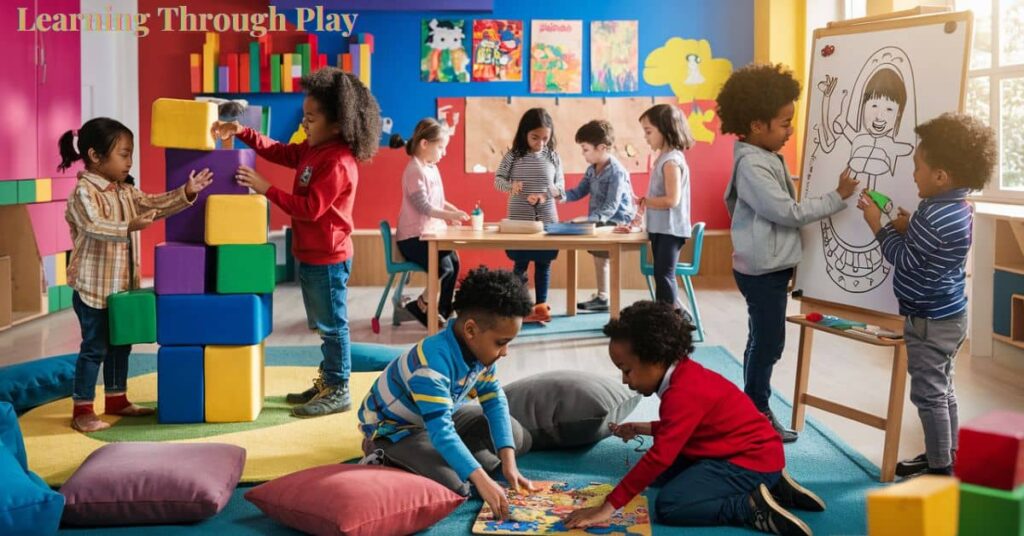
Educational tools use classic games effectively. “The Oregon Trail” highlights historical learning. Retro games support learning through gameplay. They offer interactive and engaging lessons. Historical contexts enrich players’ knowledge bases.
- Problem-solving Development: Simple mechanics require creative solutions.
- Historical Education: Games like “The Oregon Trail” teach history.
- Skill Building: Repetitive gameplay improves hand-eye coordination.
Appreciating Gaming History
Playing retro games deepens historical appreciation. It shows the evolution of game design. Understanding early designs enhances modern enjoyment. Respect for early pioneers is inspired. Retro games highlight significant industry milestones.
Exploring game history enriches player experience. It reveals the challenges faced by developers. Retro games provide insight into progress. Modern titles are built on past innovations. Learning about origins adds value to gaming.
- Historical Insight: Retro games reveal industry evolution.
- Appreciation for Pioneers: Respect grows for early game creators.
- Enhanced Modern Enjoyment: Understanding origins boosts enjoyment of new titles.
Why You Should Give Retro Gaming a Try
Retro gaming offers unique experiences. It introduces classic gameplay styles. Nostalgia adds charm to old games. Many retro titles are highly enjoyable. Trying retro games broadens gaming perspectives.
Retro games are often affordable. They provide a glimpse into history. Classic titles have timeless appeal. You can discover hidden gaming gems. Retro gaming can be a fun hobby.
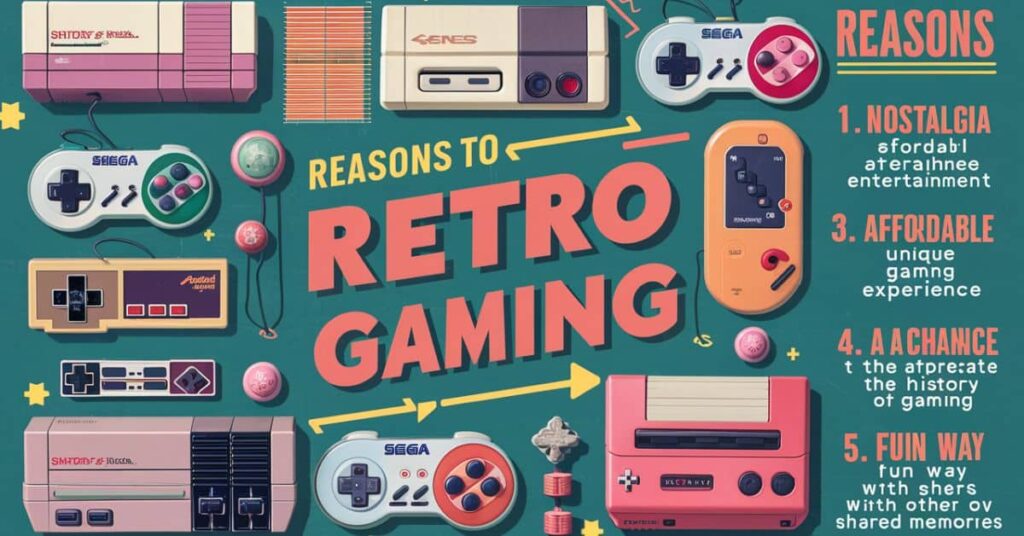
Giving retro gaming a try is rewarding. It connects players with gaming heritage. Old games often have challenging mechanics. Retro gaming offers a break from modern trends. Exploring classics can deepen gaming appreciation.
The Future of Retro Gaming
The future of retro gaming looks promising. Modern technology revitalizes classic games. Innovations enhance retro game experiences. Virtual reality could bring new dimensions. Classic games continue to inspire new designs.
Remastered editions of old games emerge. Enhanced graphics breathe new life. Nostalgic elements appeal to new audiences. Classic games merge with current technology. Future advancements keep retro gaming relevant.
Retro gaming communities remain vibrant. Online platforms facilitate sharing and collaboration. Preservation of classic games continues to grow. Educational value in retro gaming increases. Future developments promise exciting opportunities.
Continued Preservation Efforts
Game preservation is becoming more urgent. Digitizing and archiving games are crucial. Restoring classic hardware helps maintain accessibility. Ensuring future generations can study artifacts. These efforts protect cultural gaming history.

Ongoing preservation efforts are vital. Classic games need to be archived. Future generations benefit from access. Restoration preserves the cultural significance. Game history remains available through these initiatives.
Advancements in Emulation Technology
Advancing technology improves emulation software. More accurate reproductions of classic games emerge. Future emulation might include VR or AR. Retro games could gain new experiences. Innovations enhance how we play classics.
Emulation technology is rapidly evolving. Virtual reality could offer immersive play. Augmented reality might bring new adaptations. Sophisticated emulators ensure high-quality experiences. Retro games remain engaging through technology.
The Next Generation of Retro
The definition of “retro” evolves with time. Newer consoles and games age quickly. Systems from the 1990s are now retro. Younger players view them nostalgically. Each generation experiences nostalgia differently.

As technology progresses, retro definitions shift. Games from early 2000s are becoming retro. The cycle of rediscovery continues generationally. Nostalgia influences how games are perceived. Future games will soon be considered classic.
Frequently Asked Question
What is retro gaming?
Retro gaming involves playing and appreciating classic games from past decades.
How can I experience retro games today?
Retro games can be played through modern consoles, emulators, or re-released classic editions.
Why are retro games popular now?
Retro games are cherished for their nostalgic value, simplicity, and historical significance.
Final Thought
Retro gaming connects past and present. It celebrates the history of gaming. Nostalgia fuels the love for classics. Modern technology revitalizes old gaming experiences. Preservation efforts ensure their legacy continues.
Embracing retro games enriches modern play. They offer a glimpse into gaming’s evolution. Classic games inspire new designs today. The appeal of retro will persist. Exploring these games deepens our appreciation.
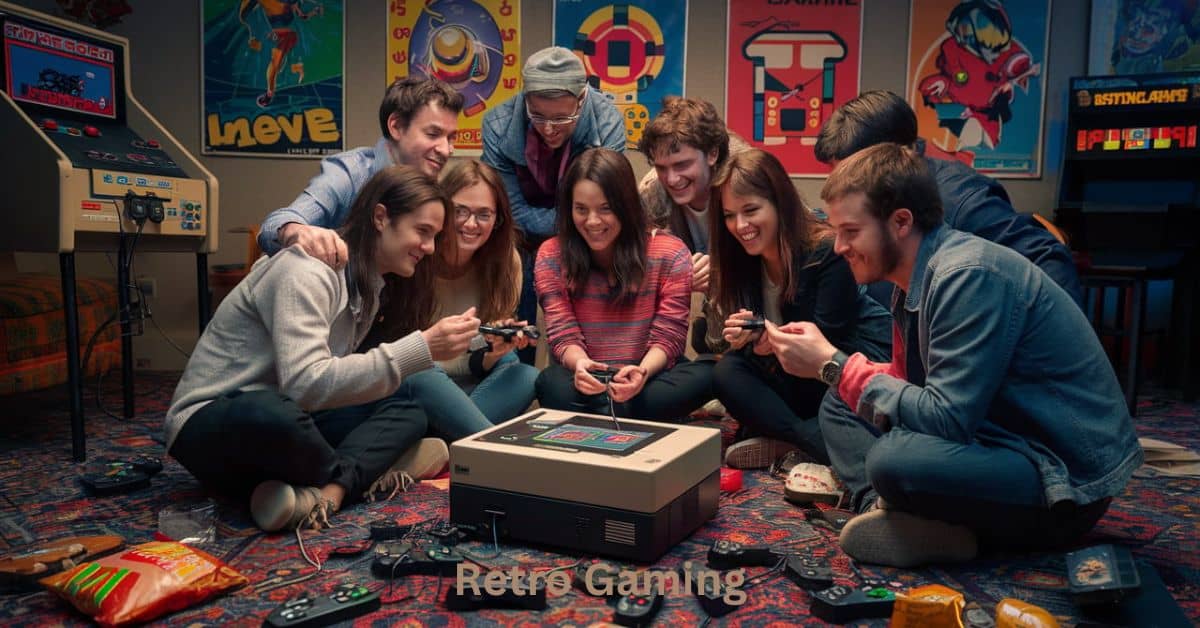











1 thought on “Retro Gaming: Embracing Classic Games in Modern Life”